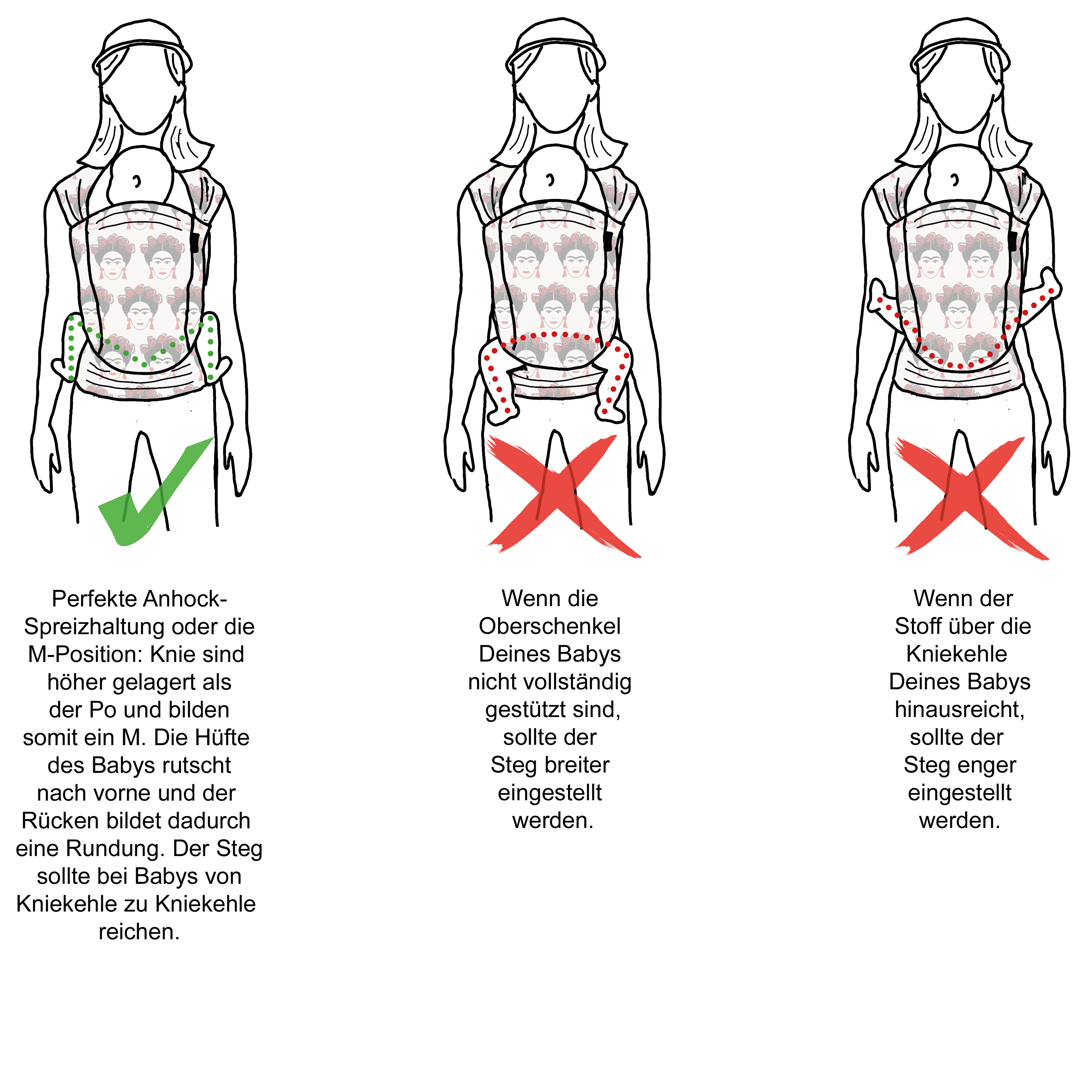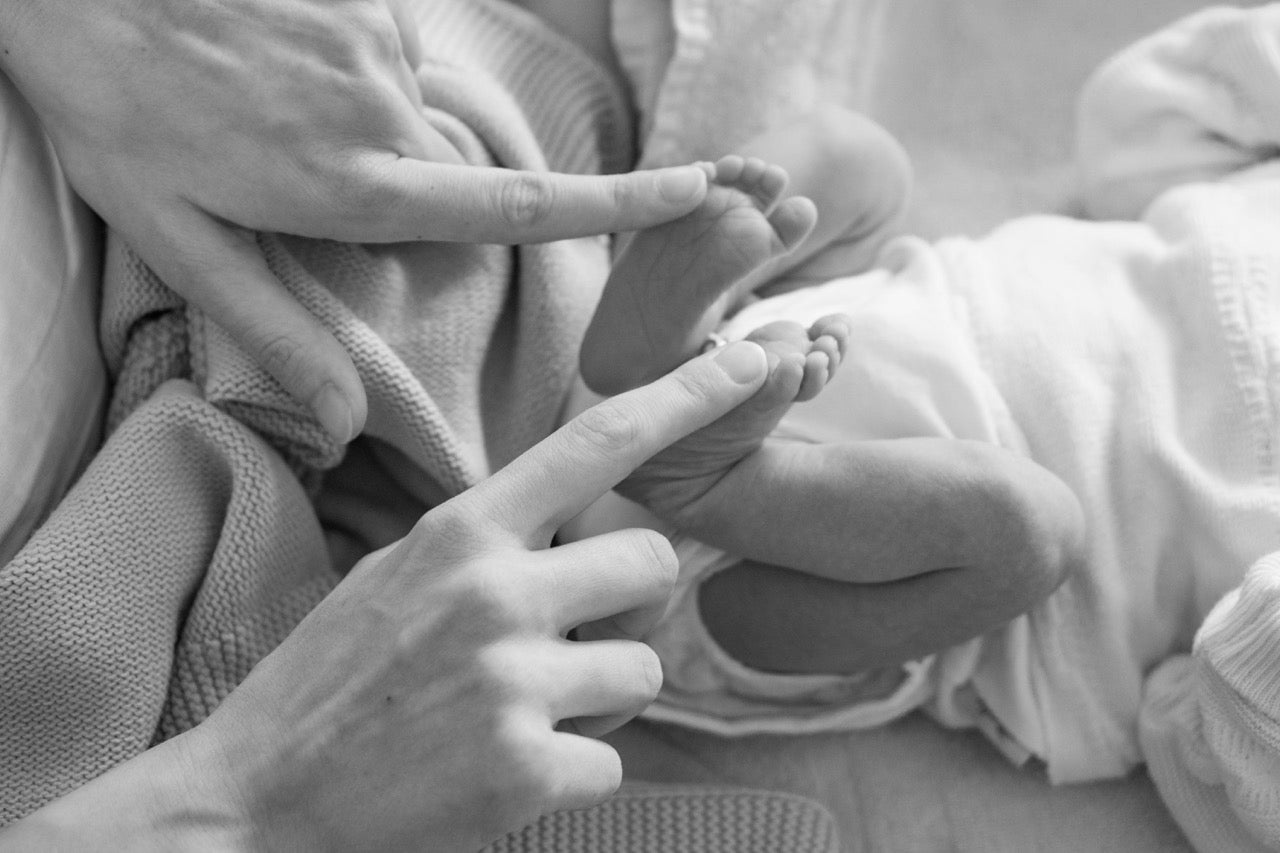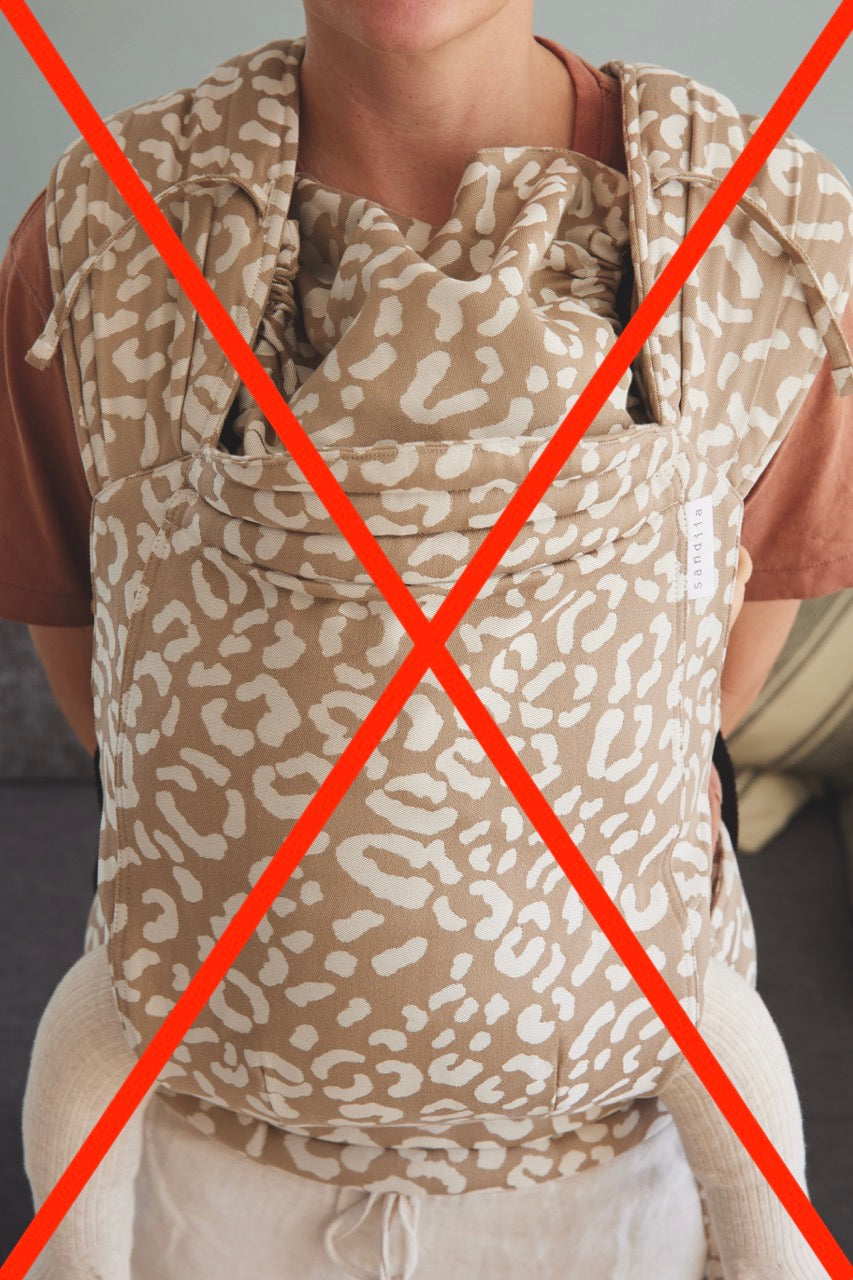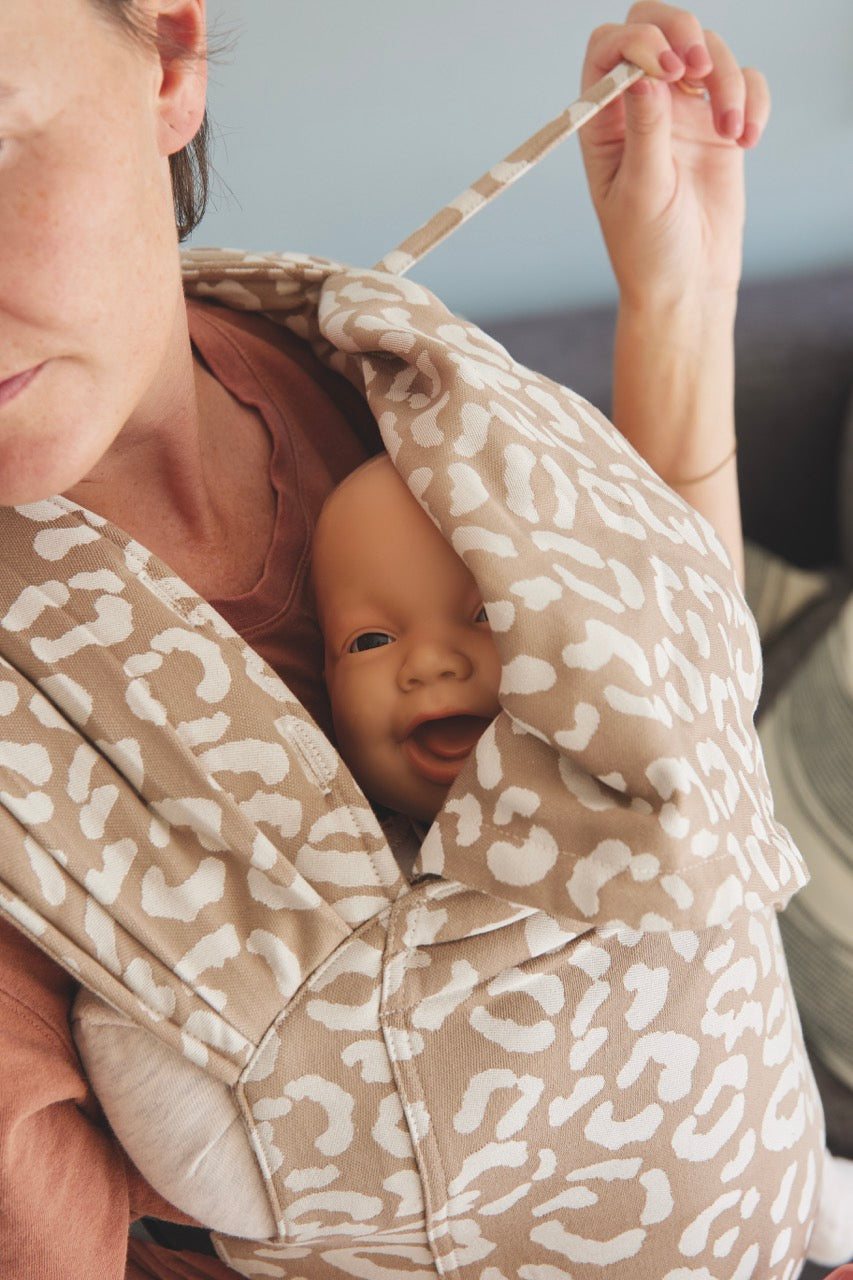Read carefully!
! WARNINGS !
WARNING!
When using this baby carrier, please monitor your child at all times.
For babies with low birth weight and children with medical conditions, consult a doctor before using the product.
risk of falling
Small children can fall out of the carrier through a wide leg opening.
Always adjust the leg openings to your baby's legs.
Before each use, make sure all fasteners are closed. Be careful when walking and leaning. Never bend at the waist, always bend at the knees. Only use this carrier for children between 3 kg and 15 kg.
choking hazard
Infants under 4 months old may choke in this product if face is pressed tightly against your body. Never hold the child too tightly against your body and leave room for head movements. Keep infants' faces clear of obstacles at all times.
• Your balance can be affected by movement and that of your child.
• Be careful when bending or leaning forward or sideways.
• This stretcher is not suitable for use during sporting activities.
• Supervise your child at all times to ensure their mouth and nose are clear when using the carrier.
• In cases of low birth weight babies and children with medical conditions, consult health professionals before using the product.
• Make sure the child cannot fall out as they become more active.
• Be aware of hazards in the home environment, such as sources of heat or spilling hot drinks.
• Stop using the stretcher if any parts are missing or damaged.
• Always check that the child does not overheat when using the carrier.
• Always check that the child does not get too cold when using the carrier.
• Before each use, ensure that all buckles, buttons, straps and adjustments are secure
• Before each use, inspect the product for torn seams, frayed straps/laces, damaged fabric and defective fasteners.
• Ensure correct positioning of the child including leg positioning.
• Premature babies, babies with respiratory problems and babies under 4 months are most at risk of suffocation.
• Never use a stretcher if your balance or mobility is affected by physical exertion,
drowsiness or illness.
• Never use a stretcher while engaging in activities such as cooking or cleaning that involve heat sources or chemicals.
• Never use a stretcher while driving or riding in a vehicle.
• Keep this carrier away from children when not in use.
What is actually the ....
... spread-squat position?

The squat-spread position in babies refers to a natural positioning of the legs and hips where the baby's legs are bent and spread out to the sides. It's also known as the "M Pose" because the baby's legs look like an upside-down "M".
In this position, the baby's thighs are pressed against the stomach, while the knees are open to the side and the lower legs hang down. Feet often touch or are slightly apart. The spread-squat position is similar to the position babies assume in the womb.
The spread-squat position is important because it promotes healthy hip joint development. By spreading the legs and flexing the hips, the hip joint is positioned in a position in which it can optimally develop. This can help prevent hip dysplasia and other hip problems.
The squat-spread position is particularly important in the first few months of a baby's life when the hip joints are still malleable and developing. It's advisable to carry babies in this position, whether it's being carried in your arms, in a baby carrier, or while being swaddled. It is important that the spread squat is performed correctly to avoid unnecessary pressure on the hips. Parents should learn about proper positioning and carrying to ensure baby's hips are properly supported.

Squat spread posture
The right sitting position
The spread-squat position is very important for babies in a baby carrier. This posture allows for a natural and ergonomic positioning of the baby, which promotes its healthy development. Here are some reasons why the spread-squat position is important in a baby carrier:
- Hip development: The spread-squat position supports the healthy development of the baby's hip joints. By spreading the legs and bending the hips, the hip joint is brought into a position in which it can develop optimally. This can help prevent hip dysplasia and other hip problems.
- Spine Health: The spread-squat position also helps to properly align the baby's spine. Bending the legs encourages the natural C-curvature of the spine, which is important for spinal development. Proper spinal alignment reduces the risk of back problems and promotes a healthy posture.
- Comfort and safety: The squat spread position offers the baby a high degree of comfort and safety in the baby carrier. By distributing the baby's weight evenly across the hips and buttocks, stress on the neck and upper back is reduced. This allows the baby to spend longer periods of time comfortably in the baby carrier.
- Viewing angle and interaction: The baby has an optimal view of its surroundings thanks to the squat-spread position. It can better explore its environment, make eye contact with parents and participate in social interactions. This is important for the baby's cognitive and emotional development.


WARNING
CHOKING HAZARD WHEN USING THE HEADREST
When using the awning, please ALWAYS make sure that your baby gets enough air and that no heat builds up under the awning. A sensible principle when carrying a baby is: no fabric on the baby's face, regardless of whether it's summer or winter, so that no "CO2 nests" form and no CO2 rebreathing occurs.
Our tip: Fasten only one side and support the head on one side diagonally over the back of the head - this way the face and thus the airways are always free.
